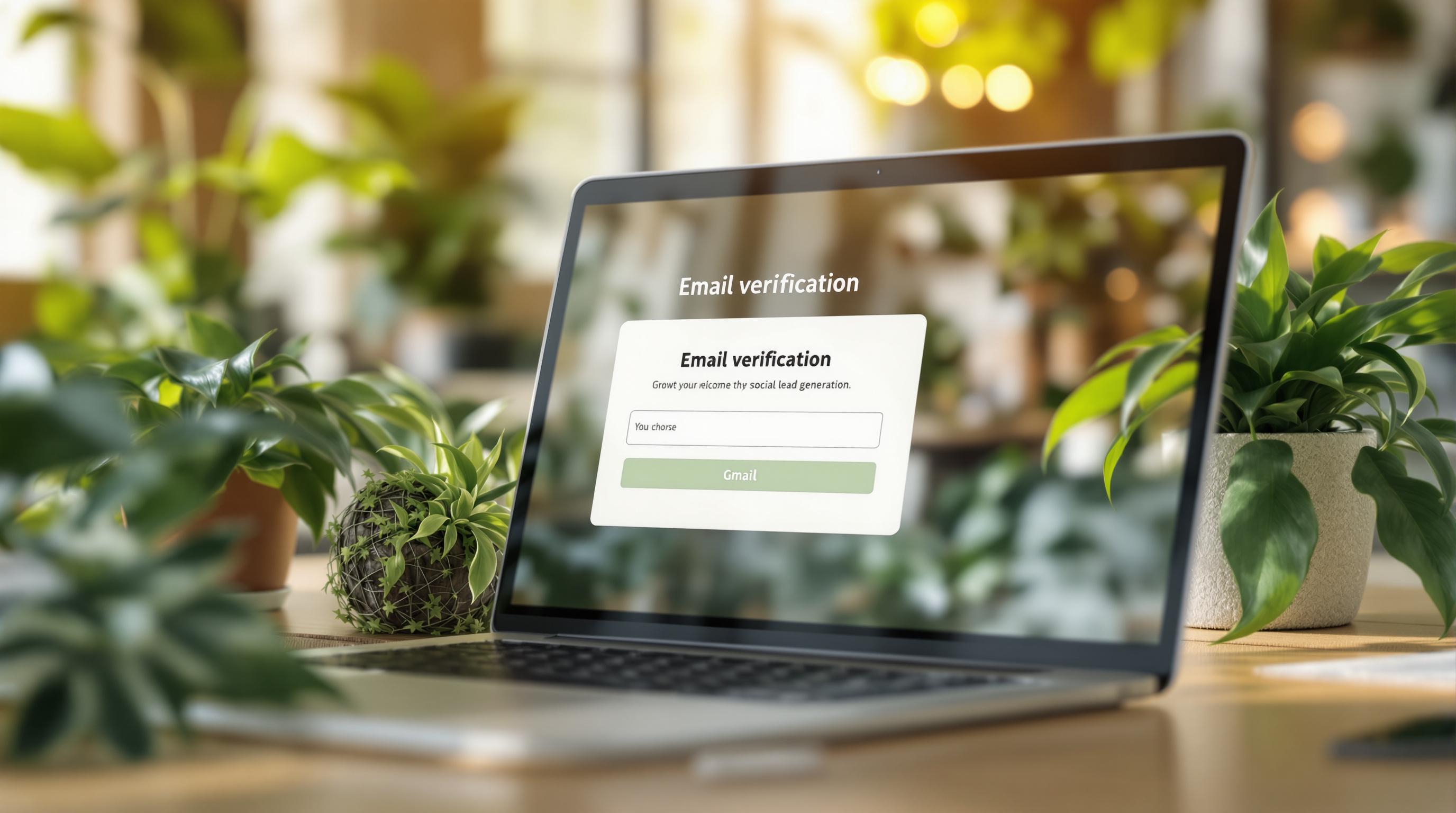Machine learning transforms email marketing by making campaigns more personalized and effective. Here's how it works and why it matters:
- Higher ROI: AI-driven email marketing delivers 20x higher ROI and 6x higher transaction rates compared to traditional methods.
- Improved Engagement: Personalized emails boost click-through rates by 81.5%, open rates by 29%, and revenue per email by 142%.
- Reduced Unsubscribes: Unsubscribe rates drop by 43.5% with tailored content.
Key Features of ML in Email Marketing:
- Predictive Analytics: Determines the best send times for each recipient.
- Dynamic Content: Creates real-time, tailored messages.
- Advanced Segmentation: Groups audiences by behavior, not just demographics.
- Behavior-Triggered Emails: Sends emails based on user actions like purchases or website visits.
Machine learning uses data like email engagement, purchase history, and browsing habits to predict user preferences and improve personalization. Ethical data collection and privacy compliance (e.g., GDPR, CCPA) are critical to building trust and ensuring high-quality insights.
Machine Learning in Email Marketing
Machine learning is changing the way businesses approach email marketing. It allows systems to learn from user interactions without needing explicit programming, driving advanced levels of personalization.
How Machine Learning Works in Email Marketing
Machine learning analyzes large amounts of customer data to spot patterns and predict future actions. It uses data points like:
- Open rates and click-through behavior
- Purchase history and browsing habits
- Timing of email engagement
- Content preferences and interactions
As these systems process more data, they improve through a feedback loop. This means smarter algorithms and more refined campaigns over time. The result? Marketing efforts that feel personalized and relevant to each recipient.
Benefits of Machine Learning for Personalization
| Benefit | Impact | Example Outcome |
|---|---|---|
| Precise Targeting | Better audience segmentation based on behavior | Higher engagement by aligning content with interests |
| Predictive Insights | Optimized send times for individuals | Boosted A/B testing success [3] |
| Dynamic Content | Tailored messaging in real time | Increased conversions with relevant offers |
| Advanced Segmentation | Grouping audiences by behavior, not just demographics | More effective communication strategies |
"AI in email marketing uses machine learning algorithms to personalize content, optimize send times, and segment audiences." - Salesforce, AI in Email Marketing [3]
Machine learning processes data on a scale that humans can't match. It identifies subtle patterns in customer activity, enabling strategies that predict what customers are likely to do next.
Instead of relying on static demographic categories, machine learning creates audience segments that adapt based on real-time engagement and behavior.
To make the most of these capabilities, businesses need access to quality data. The next section will dive into how to gather and use it effectively.
Data Collection and Analysis for Personalization
Key Data Types for Email Personalization
Machine learning algorithms thrive on diverse data sources to deliver personalized experiences. Here are the main types of data used:
| Data Category | Examples | Purpose |
|---|---|---|
| Behavioral Data | Website visits, product views, cart abandonment | Anticipate user interests |
| Engagement Metrics | Email opens, click patterns, time spent reading | Optimize content and timing |
| Transaction History | Purchase frequency, average order value, product categories | Tailor recommendations |
| Demographic Info | Location, age, industry role | Segment audiences more precisely |
While collecting this data is crucial for personalization, ethical and transparent practices must guide every step.
Ethical Data Collection Practices
Respecting user privacy is non-negotiable when gathering data. Businesses must adopt clear, transparent policies to maintain trust while collecting insights.
- Use explicit opt-in processes to ensure consent.
- Provide clear, accessible privacy policies.
- Offer tools that let users easily manage their data preferences.
- Regularly audit and document data handling to comply with regulations like GDPR and CCPA.
"Machine learning has revolutionized email marketing by enabling businesses to communicate with customers in a personalized and relevant manner." - HIVO Blog [1]
Ethical practices not only foster trust but also improve the quality of your data, which is critical for machine learning to deliver accurate personalization.
How Machine Learning Processes Data
Modern machine learning (ML) algorithms turn raw data into actionable insights through advanced techniques. Here's how:
Pattern Recognition
ML identifies trends and patterns in user behavior, allowing for real-time updates to content and audience segmentation. This ensures campaigns remain relevant as behaviors change.
Real-time Processing
Algorithms continuously refresh user profiles based on new interactions, enabling timely and effective personalization. This includes:
- Instant content updates based on recent activity
- Predictive optimization for the best send times
- Automated updates to audience segments as behaviors shift
Quality Control
To ensure accuracy, data must be regularly cleaned, validated, and monitored. Removing outdated or irrelevant entries keeps your insights sharp and actionable.
The effectiveness of machine learning in email personalization hinges on high-quality, ethically collected data. By combining responsible data practices with advanced processing, businesses can create engaging campaigns that respect user privacy and build stronger customer relationships.
Implementing Personalization Strategies with Machine Learning
Machine learning is changing email marketing by making large-scale personalization more achievable. Here's how you can leverage it effectively.
Segmenting Audiences Using Machine Learning
Machine learning allows for dynamic audience segmentation by analyzing various data points to create behavior-based groups. Unlike static segmentation, this method adapts to user actions, enabling more precise targeting.
| Segmentation Type | Data Sources | Business Impact |
|---|---|---|
| Behavioral | Website interactions, purchase history, email engagement | Anticipates future actions and interests |
| Preference-based | Content clicks, product views, survey responses | Customizes content to user preferences |
| Engagement Level | Open rates, click patterns, response times | Adjusts communication frequency |
For instance, during Melbourne's lockdown, TAXIBOX utilized machine learning to segment customers interested in interstate moves. This allowed them to send timely and relevant messages to the right audience.
Once you've segmented your audience, the next step is creating content that aligns with their specific needs and preferences.
Creating Personalized Content
Personalization isn't just about adding someone's name to an email - it's about crafting experiences that feel tailored to each individual.
Steps to Implement Personalized Content:
- Centralize customer data: Use a Customer Data Platform (CDP) to unify data from multiple channels.
- Analyze user behavior: Track interactions and apply machine learning to uncover preferences.
- Automate content delivery: Match content to user profiles automatically.
Amazon serves as a great example here. Their recommendation engine, powered by machine learning, drives 35% of their total sales by offering personalized product suggestions [3].
But personalization doesn’t stop at content. Timing plays a critical role in ensuring your message gets noticed.
Optimizing Send Times with Predictive Analytics
Predictive analytics tools help determine the best time to send emails by analyzing past engagement data. Solutions like Freddy STO and Einstein use this approach to boost open rates.
Example: Freshworks' Freddy STO has improved email open rates by 5–10% [2]. It achieves this by:
- Studying historical engagement trends
- Pinpointing ideal delivery times for each recipient
- Automating email scheduling
- Continuously learning from new interactions
To make the most of these strategies, balance automation with human input. Regularly monitor performance, adjust tactics as needed, and use A/B testing to fine-tune your campaigns for better results.
sbb-itb-8abf799
Evaluating and Improving Campaign Performance
Analyzing performance through data helps businesses maximize the potential of machine learning to create highly tailored email campaigns.
Key Performance Metrics and A/B Testing
Tracking the right metrics is crucial for gauging the success of personalized email campaigns. Research shows that personalized campaigns can boost open rates by up to 75% and click-through rates by 45%.
Generative AI has taken A/B testing to the next level, delivering results that are up to 10 times better in email marketing [3]. To fine-tune machine learning models, experiment with subject lines, content variations, and audience segmentation to pinpoint the most effective strategies for personalization.
Using Feedback for Continuous Improvement
Improving machine learning-based campaigns involves three main steps:
- Collect and evaluate campaign data
- Use machine learning to uncover patterns of success
- Apply these findings to enhance personalization models
Instead of focusing on isolated results, look at trends over time to truly understand the impact of your machine learning efforts. Regularly updating your models with fresh data ensures they remain accurate and effective.
By consistently analyzing metrics and feedback, you can refine your campaigns to target areas with the strongest links to positive results. This ongoing improvement process helps keep your personalization strategies sharp and impactful.
Implementing machine learning for personalization isn’t without its challenges, and we’ll dive into those next.
Challenges in Machine Learning-Driven Personalization
Machine learning brings impressive tools for email personalization, but implementing these strategies isn’t without hurdles. As more marketers turn to AI for email campaigns, they encounter some key challenges that require thoughtful solutions.
Managing Data Privacy
With 71% of consumers concerned about online data security, businesses need to prioritize trust. Here’s how:
- Use strong data encryption methods
- Comply with regulations like GDPR and CCPA
- Limit data collection to only what’s necessary
- Be upfront about how user data is used
Regular audits and clear policies can go a long way in building trust. The challenge is finding the right balance - collect enough data to personalize effectively, but respect privacy limits.
Balancing Automation and Human Oversight
Automation is powerful, but it’s not perfect. In fact, 62% of marketers believe human oversight is essential for automated campaigns. A hybrid approach works best: let AI handle tasks like data analysis and content suggestions, while human marketers refine the messaging to ensure it aligns with the brand’s tone and values.
Scaling Personalization for Large Audiences
Scaling personalization isn’t just about reaching more people - it’s about doing so without losing quality. Machine learning can help with audience segmentation, while cloud computing speeds up data processing. Monitoring key performance indicators (KPIs) and continuously fine-tuning machine learning models are critical to keeping campaigns effective as data volumes grow.
Tackling these challenges is crucial for unlocking the full potential of machine learning in email personalization, especially when applying the strategies outlined earlier in this guide.
Email Extractor Tool - Extract Emails with AI Automation

With machine learning reshaping email marketing, having access to reliable lead data is more important than ever. The Email Extractor Tool uses AI to simplify lead generation while prioritizing privacy.
Key Features of the Email Extractor Tool
This Chrome extension offers some standout features:
- AI Detection: Identifies valid email addresses on web pages and processes data locally to meet privacy standards.
- Export Options: Download extracted emails in CSV or TXT formats, making it easy to use with email marketing tools.
Boosting Email Personalization
The tool makes it easier for marketers to automate lead generation and fine-tune data for machine learning. This means you can:
- Build more focused email campaigns using detailed demographic data.
- Expand lead generation without sacrificing data accuracy.
Pricing and Plans
| Plan | Monthly Cost | Email Volume | Features |
|---|---|---|---|
| Starter | $8.99 | 5,000 emails | Basic automation, CSV export |
| Growth | $37.99 | 50,000 emails | Priority support, advanced tools |
| Enterprise | $139.99 | 1,000,000 emails | Premium support, full features |
These plans are designed to grow with your business needs. All data is processed locally, ensuring compliance with privacy laws like GDPR and CCPA.
Conclusion
Machine learning is reshaping email marketing by enabling precise, tailored campaigns that deliver measurable outcomes. For instance, Reebok and Helly Hansen reported revenue growth of 4.2% and 28% per session, respectively, thanks to ML-driven personalization [1][3]. Similarly, Room & Board saw an impressive 80% increase in conversions through real-time personalization [1].
With 80% of consumers expecting personalized interactions, using machine learning in email marketing has become increasingly important [3]. This technology empowers marketers to create data-focused, highly engaging campaigns, improve timing, and scale with ease. Tools like the Email Extractor Tool further enhance these efforts by supplying reliable, privacy-compliant data for personalization algorithms.



